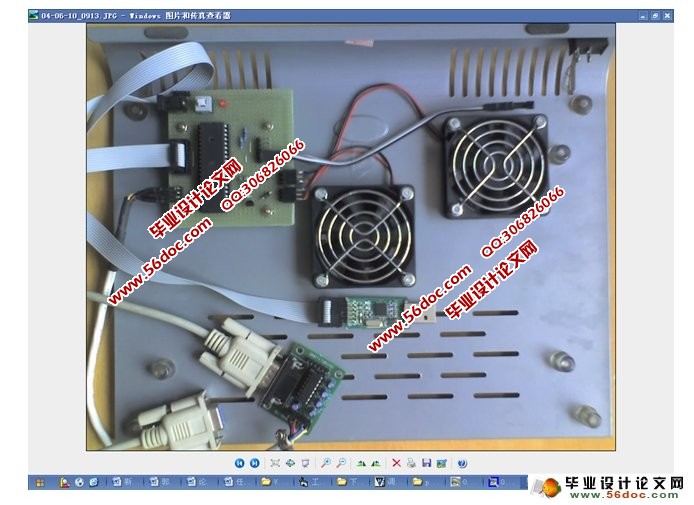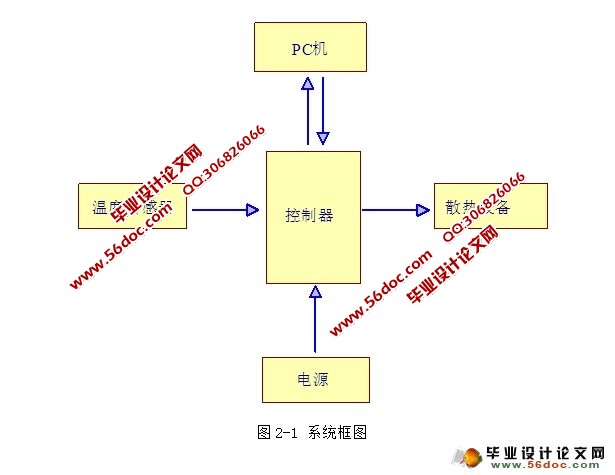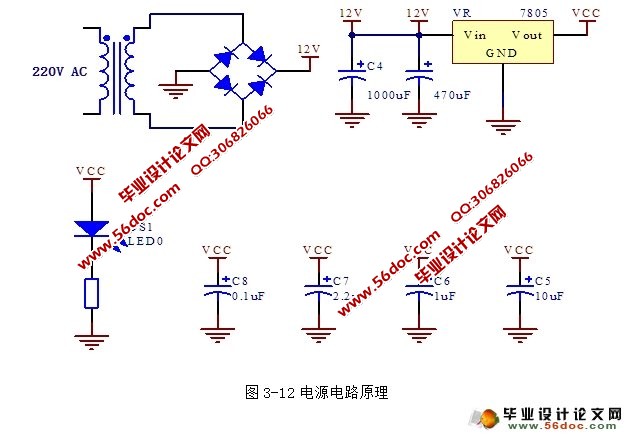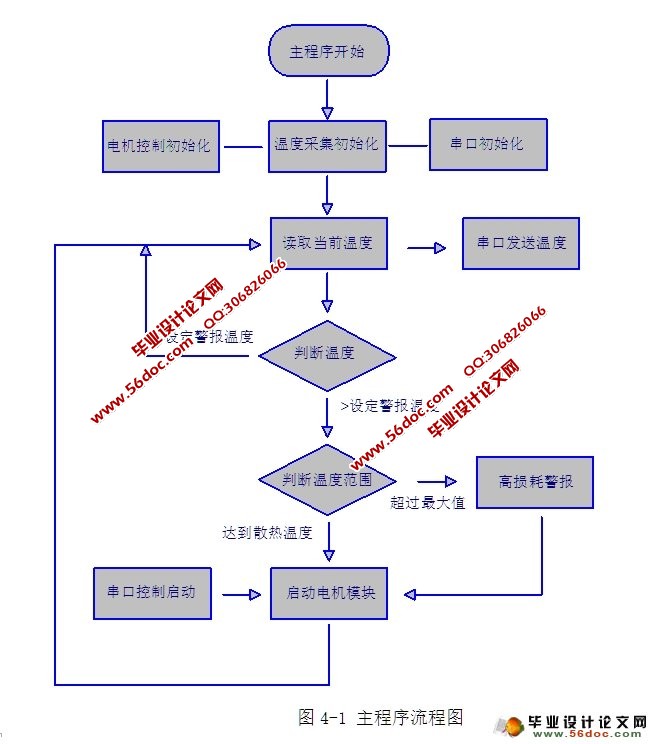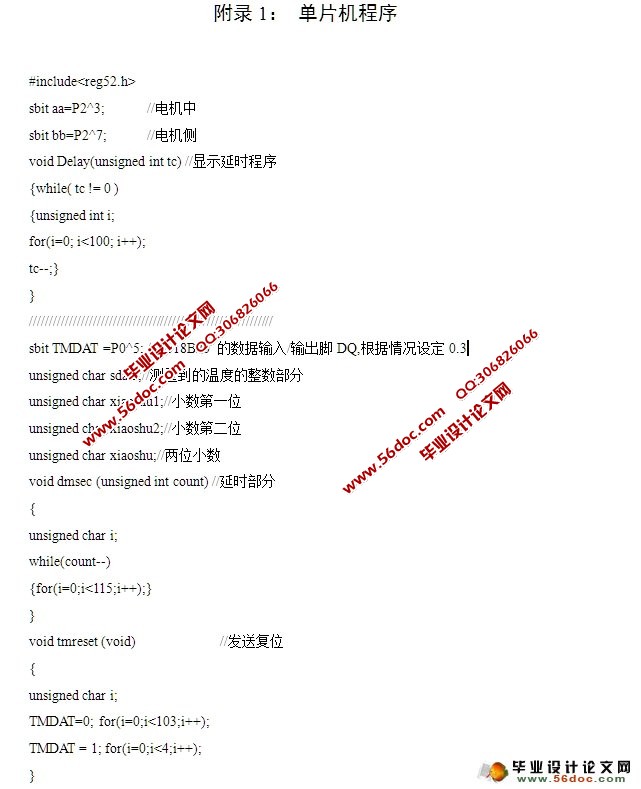笔记本电脑的智能底座设计(附程序,电路图)(任务书,开题报告,中期报告,外文翻译,论文12000字,答辩PPT)
The design of intelligent notebook cooling base
摘 要
笔记本电脑,便于携带,体积小,而且它的功能满足大多数人的需要,随着科学技术的近步带来的成本下降,笔记本的价格也为大多数人所接受。随着使用笔记本人数的增加,笔记本的各种问题也暴露出来,除了性价比之外,最关心的莫过于散热。笔记本在性能与便携性对抗中,散热成为最关键的因素,笔记本散热一直是笔记本核心技术中的瓶颈。有时笔记本电脑会意外的死机,一般就是系统温度过高导致。为了解决这个问题,人们设计了散热底座,可以使笔记本产生的热量尽快的扩散到电脑外部,不影响笔记本的使用功能,不会使电脑的线路出现腐蚀现象,保证笔记本电脑的正常工作。好的底座可以很大的延长笔记本电脑使用寿命。
本设计针对散热问题做了深入的探讨,并设计出一套基于单片机控制的智能散热底座,综合了成本和性能等相关因素,采用了Atmel公司的AT89S52为核心搭建了该系统。在本着成本控制和推向市场的前提下,文中的电路简约而易于批量生产,在完成散热功能和最少成本的前提下达到了节能和智能。
关键词:散热底座;单片机;智能控制
ABSTRACT
Notebook computer is portable and small, and its functions could meet the needs of the majority, with the developing of science and technology, the cost decline, and the price of the laptop base to be acceptable to most people. But with the increase in the number of using the laptop people, they exposed various problems, in addition to cost, people always concerned about dissipating heat extremely. In the confrontation of the laptop’s performance and portability, the most critical factor is dissipating heat, and laptop’s dissipating heat has been the bottleneck of the core technology. Sometimes it end up unexpected, it is always because of that the system temperature is too high. To solve this problem, people have designed heat dissipation base, the heat can remove from the laptop to the outside as quickly as possible, it does not affect the use of laptop, and its electronic line will not be eroded, to ensure the normal operation of laptop. A good base could extend the life of laptop.
This design makes an in-depth discussion about heat dissipation, and design a microcontroller-based intelligent control of cooling base, synthesize cost and performance and so on, using the core AT89S52 Atmel Corporation built the system. Under the premise of cost and market, the circuit in this design is simple and easy-to-volume production, it can be intelligent and energy-saving under the premise of heat dissipation and minimum cost.
Key Words:cooling base; micro control unit; intelligent control
本系统的结构主要包括对外界温度信息的采集电路,控制器电路,散热风扇控制电路,上位机串口通信电路。选择合理的电路方案,能实现好系统的功能,降低设计的成本,而且有利于后继添加的扩展功能。下面先给出系统组成框图,然后对可能的各方案进行比较说明。
目 录
1 引言 1
1.1 系统研究背景 1
1.2 散热原理和方式 1
1.3 笔记本散热底座设计 2
1.3.1 散热底座的材料 2
1.3.2 散热底座的结构 2
1.3.3 散热底座的性能 2
2 系统方案论证 4
2.1 系统框图 4
2.2 各模块方案论证 4
2.2.1 控制器的选择 4
2.2.2 温度采集器件的选择 5
2.2.3 电机及其驱动器的选择 6
3 系统硬件设计 7
3.1 单片机AT89S52 7
3.1.1 芯片介绍 7
3.1.2 系统时钟电路 11
3.1.3 复位电路 11
3.2 温度传感器电路 12
3.2.1 芯片DS18B20介绍 12
3.2.2 传感器连接电路 13
3.3 直流电机驱动电路 14
3.3.1 三极管简介 14
3.3.2 直流电机简介 14
3.3.3 直流电机驱动电路 14
3.4 串口通信电路 15
3.4.1 串口通信介绍 15
3.4.2 芯片MAX232介绍 16
3.4.3 MAX232电路连接图 16
3.5 电源电路 17
3.5.1 电源芯片介绍 17
3.5.2 电源芯片连接电路 18
4 系统软件设计 20
4.1 编程语言简介 20
4.2 单片机程序设计 21
4.2.1 主程序设计 21
4.2.2 温度采集子程序 22
4.3 VB上位机程序设计 22
4.3.1 VB6.0软件介绍 22
4.3.2 主程序设计 24
4.3.3 交互式界面设计 24
5 系统集成与调试 26
5.1 硬件调试 26
5.2 软件调试 27
5.3 调试问题及解决方法 28
结 论 30
参考文献 31
附录1: 单片机程序 32
附录2: VB6.0程序 36
附录3: 英文资料及中文翻译 39
致 谢 58
|

